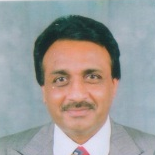International Journal of Computer Network and Information Security (IJCNIS)
IJCNIS Vol. 8, No. 6, 8 Jun. 2016
Cover page and Table of Contents: PDF (size: 1023KB)
Performance Analysis and Enhancement of TCP in Presence of Jitter in Wireless Networks
Full Text (PDF, 1023KB), PP.9-21
Views: 0 Downloads: 0
Author(s)
Index Terms
Congestion, convergence, immediate-recovery, jitter, stability, TCP, wireless networks
Abstract
In wireless networks two types of losses namely congestion loss and transmission loss are significant. One of the important transmission losses is jitter. Variation in inter-arrival time is called jitter. When jitter value is greater than half of the average round trip time cause timeout loss and sender window size falls to one packet resulting reduction in throughput and degradation in the quality of service (QoS). In this paper, we are discussing a new model for transmission control protocol (TCP) which is capable of changing its window size based on the feedback. In the new model TCP is added with intelligence so that it can distinguish the type of losses. If the loss is due to congestion, congestion control algorithm is invoked and loss is due to jitter immediate-recovery algorithm is invoked to recover from the throughput loss. The technique also provides an end-to-end congestion control. The performance of TCP is further enhanced by discussing stability. Time-delay control theory is applied for the analysis of asymptotic stability. The stability boundaries of random early detection (RED) control parameter Pmax and jitter control parameter β are derived. Using the characteristic equation of Hermite matrix an approximate solution of q(t) (queue length) which converges to a given target value is derived. The results are analyzed based on graphs and statistical data using Matlab R2009b.
Cite This Paper
Goudru N.G, Vijaya Kumar B.P, "Performance Analysis and Enhancement of TCP in Presence of Jitter in Wireless Networks", International Journal of Computer Network and Information Security(IJCNIS), Vol.8, No.6, pp.9-21, 2016. DOI:10.5815/ijcnis.2016.06.02
Reference
[1]Ivan Klimek, Marek Cajkovsky and Frantisek Jakab, “Novel methods of utilizing Jitter for Network Congestion Control”, Acta Informatica Pragensia, 2(2), 124, 2013, ISSN 1805-4951.
[2]Go Hasegawa, Masashi Nakata, Hirotaka Nakano, “Receiver-based ACK splitting mechanism for TCP over wired/wireless heterogeneous networks”, IEJCE Trans. Communication, Vol. E90-B, No. 5, May 2007.
[3]Saad Biaz and Nitin H.Vaidya,”Distinguishing congestion losses from wireless transmission losses: A negative result”, Department of Computer Science, Texas A and M University, TX, 77843-3112, USA.
[4]Saad Biaz, and Nitin H.Vaidya, “Sender-based heuristics for distinguishing congestion losses from wireless transmission losses”, Department of Computer Science, Texas Aand M University, USA, 2003.
[5]Toni Janevski, and Strahil Panev, “Modifications for TCP improvements over wireless networks”, 18th Telecommunications forum TELFOR-2010, Serbia, Belgrade, November 2010.
[6]Geoff Huston, “TCP in a wireless world”, IEEE Internet computing, 1089- 7801/01, April 2001.
[7]H. Balakrishnan, S. Seshan, E. Amir and R. H. katz., “Improving TCP/IP Performance Over Wireless Networks,” In Proceedings of ACM MOBICOM ’95, 1995.
[8]A. Bakre and B. R. Badrinath, “I-TCP: Indirect TCP for Mobile Hosts,” In Proceedings of 15th International Conf. on Distributed Computing Systems (ICDCS), May 1995.
[9]H. Balakrishnan, S. Seshan, E. Amir and R. H. katz., “Improving TCP/IP Performance over wireless networks,” In Proceedings of ACM MOBICOM ’95, 1995.
[10]P. Sinha et al., “WTCP: A Reliable Transport Protocol for Wireless Wide-Area Networks,” In Proceedings of ACM MOBICOM 1999, Aug. 1999.
[11]S. Mascolo and C. Casetti, “TCP Westwood: Bandwidth Estimation for Enhanced Transport over Wireless Links,” In Proceedings of MOBICOM ’2001.
[12]Seongho Cho, and Heekyoung Woo, “TCP Performance Improvement with ACK Pacing in Wireless Data Networks”, School of Electrical Engineering and Computer Science, Seoul National University, Seoul, Republic of Korea.2005.
[13]Masashi Nakata, Go Hasegawa, Hirotaka Nakano, “Modeling TCP throughput over wired/wireless heterogeneous networks for receiver-based splitting mechanism”, Graduate school of Information Science and Technology, Osaka University, Japan.
[14]Eric Hsiao-Kuang Wu, and Mei-Zhen Chen,” JTCP: Jitter-based TCP for heterogeneous wireless networks”, IEEE journal on selected areas in communications, Vol. 22, No. 4, May 2004.
[15]H. Balakrishnan and R. H. Katz, “Explicit Loss Notification and Wireless Web Performance,” In Proceedings of IEEE GLOBECOM ’98, 1998.
[16]L.Tan, W.Zhang, G.Peng and G.Chen, ”Stability of TCP/RED systems in AQM routers”, IEEE Trans. Automatic control, Vol. 51, No. 8, pp 1393-1398, August 2006.
[17]W.Zhang. L.Tan, and G.Peng, “Dynamic queue level control of TCP/RED systems in AQM routers”, Computers and Electrical Engineering, Vol.35, No. 1, PP 59-70, 2009.
[18]Hiroaki Mukaidani, Lin Cai, Xuemin Shen, “Stable queue management for supporting TCP flows over wireless networks”, IEEE ICC, 978-1-61284-231-8/11, 2011.
[19]S. Goankar, R.R.Choudhury and Robin Kravets, “Designing a rate-based transport protocol for wired-wireless networks”, Department of Computer Science, University of Illinois, Urbana Champaign, IL.
[20]Shankaraiah and Pallapa Venkataram, “Transaction-based QoS management in a hybrid wireless superstore environment”, I.J. Computer Network and Information Security, 2, 1-11, Published Online March 2011 in MECS.
[21]Adira Quintero, Francisco Sans, and Eric Gamess,” Performance Evaluation of IPv4/IPv6 Transition Mechanisms”, I. J. Computer Network and Information Security, 2, 1-14 Published Online February 2016 in MECS.

